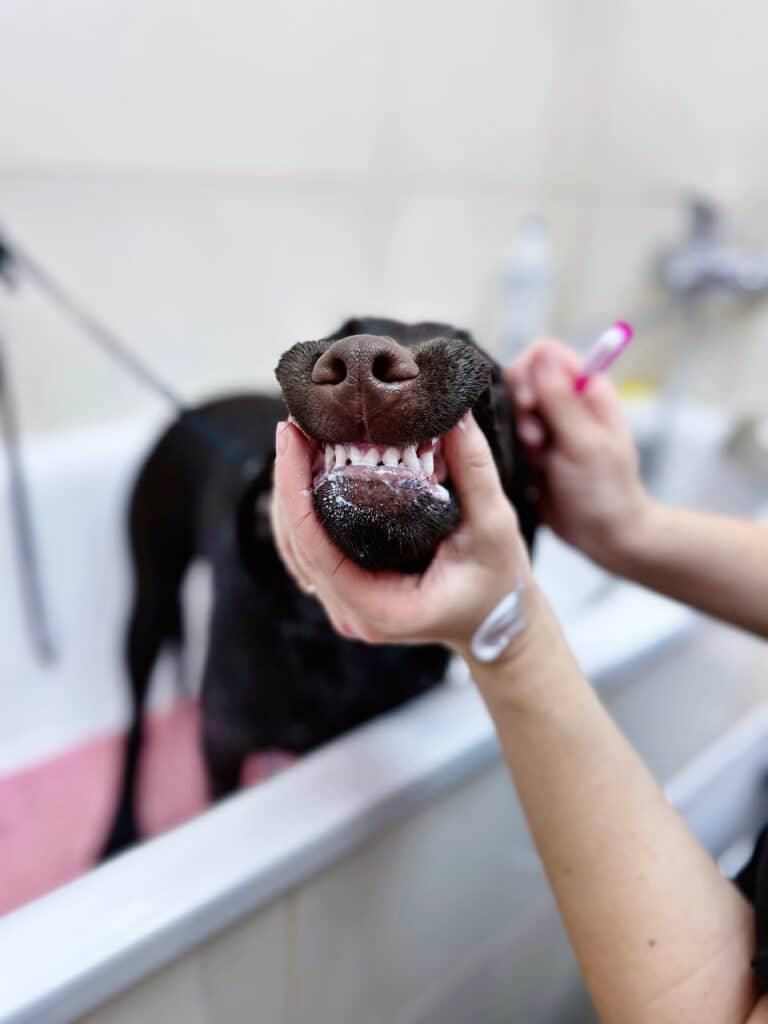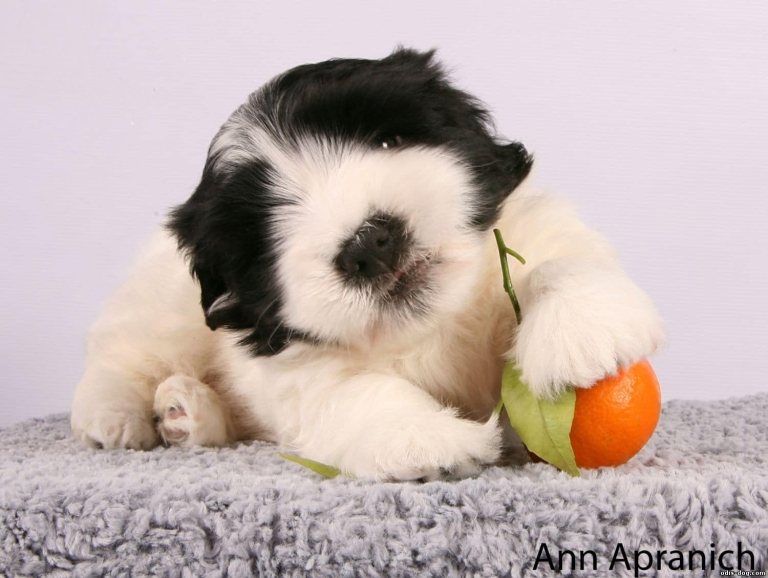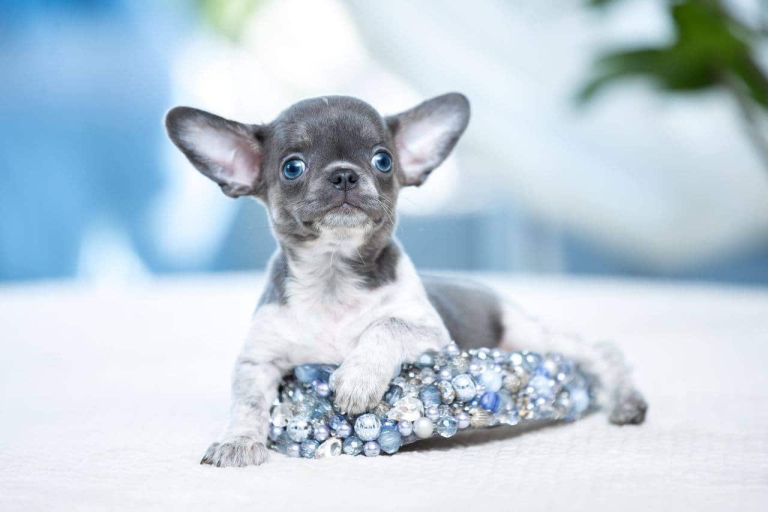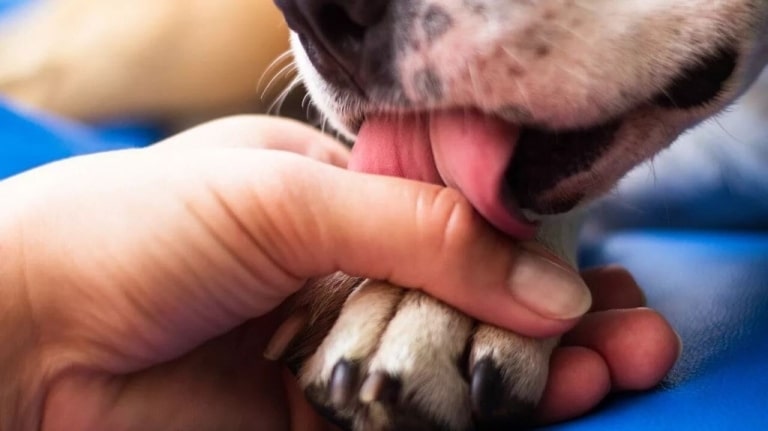Brushing your dog’s teeth is an important part of taking care of his dog’s health that is often underestimated. Many owners have no idea that by the age of three, about 80% of dogs face problems in the oral cavity, such as tartar, gingivitis or periodontitis. It is regular brushing that helps prevent this, so learn more about this procedure.
How often should you brush your dog’s teeth?
The oral cavity is a real battlefield for bacteria. Especially when food remains on the teeth. What can happen if you ignore dental care?
First, plaque appears on the teeth, which, like in humans, gradually hardens, becoming tartar. This is the first step to inflammation of the gums (gingivitis). If left untreated, it turns into periodontitis, which destroys the tissues that hold the teeth in place. As a result, the dog may start to lose teeth. In addition, plaque and bacteria often cause an unpleasant smell from the mouth, which will definitely not add pleasantness to communication with your pet.
How to prevent this? Veterinarians recommend brushing your dog’s teeth every day. This will not only help to effectively get rid of plaque, but also significantly reduce the risk of tartar formation. If daily cleaning seems too difficult, try to do it at least 2-3 times a week. Even such a care regimen will significantly improve the health of your dog’s oral cavity and preserve his teeth for many years.
What tools to use for cleaning teeth?
To keep your dog’s teeth healthy, it is important to choose the right care products. You will need a special toothbrush. Using a human brush is not suitable, as dog brushes have softer bristles and a comfortable shape that allows easy access to the furthest teeth. Among the different types of brushes, you can choose the one that suits you and your pet. For example, a finger brush is great for beginners. It is easily controlled and helps to accustom the dog to the procedure. And a double brush with two heads of different sizes allows you to clean both large and small teeth efficiently.
In addition to the brush, it is equally important to choose a special toothpaste. Human pastes contain substances harmful to animals, such as fluoride or xylitol. Instead, dog treats are designed to be swallowed without harm to health. Plus, they come in dog-friendly flavors like chicken or beef, making brushing a pleasant experience.
If daily cleaning seems too difficult for you, you can supplement the care with chewing sticks and special teeth toys. These sticks have a texture that mechanically cleans the teeth and helps remove plaque, while the ribbed toys massage the gums as you chew. They will not only help fight plaque, but also freshen the dog’s breath.
There are also antibacterial liquids that are added to water. They reduce the number of bacteria in the oral cavity, prevent tartar formation and freshen breath. It is important to remember that this is only an additional means of care, and not a replacement for the main procedures.
For an even greater effect, pay attention to special foods for dental health. They have a texture that helps clean the teeth while chewing, and they contain substances that prevent the formation of plaque.
Teeth cleaning procedure
How to properly brush a dog’s teeth? To make brushing your dog’s teeth easy and pleasant, you should prepare properly and follow a few simple steps.
Preparation. First of all, it is important to make sure that your pet is calm and relaxed. Choose a quiet place where there are no unnecessary distractions. To make the dog feel more comfortable, first let him smell the brush and taste the toothpaste. This will help to find a common language with new tools.
Choosing a position. Each pet is unique, so try different brushing positions to find the most comfortable one. Some owners put the dog on its side, others put it on their lap or stand in front of it. The main thing is to make the dog feel safe and relaxed.
Start of cleaning. Put a little toothpaste on the brush and start with the front teeth, gradually moving to the back teeth. Use gentle circular motions, paying special attention to the areas where the teeth meet the gums, as this is where the most bacteria accumulates.
Short and pleasant sessions. If the dog is not yet used to brushing its teeth, start with short sessions, for example, 30 seconds. Gradually increase the time so as not to overexert your pet.
Award. After cleaning, be sure to encourage the dog – give him a treat or play. This will help strengthen positive associations and make brushing easier in the future.
How to remove tartar from a dog and where can it be done?
Tartar in dogs is a hardened layer of dental plaque that results from the accumulation of food debris and bacteria. If you do not take care of your teeth, this plaque hardens, turning into tartar, which cannot be removed with a regular brush. Fortunately, plaque can be easily removed in its early stages with regular brushing. But when the stone has already hardened, it is better to entrust it to professionals.
Professional cleaning by a veterinarian is the most effective method. The procedure is called ultrasound scaling and is performed under anesthesia. The veterinarian removes the stone even in hard-to-reach places, after which the teeth are polished, which reduces the risk of plaque formation again. In addition, the veterinarian examines the gums and teeth to detect other possible problems that need treatment.
If tartar has already appeared, but the situation is not critical, you can go to a grooming salon, where the tartar is removed without anesthesia. This method is suitable only for dogs that calmly tolerate such procedures and do not experience severe stress. However, be careful: if the dog has inflammation or shows signs of stress, such as a blue tongue, shortness of breath or aggression, the groomer will immediately refer you to the vet.
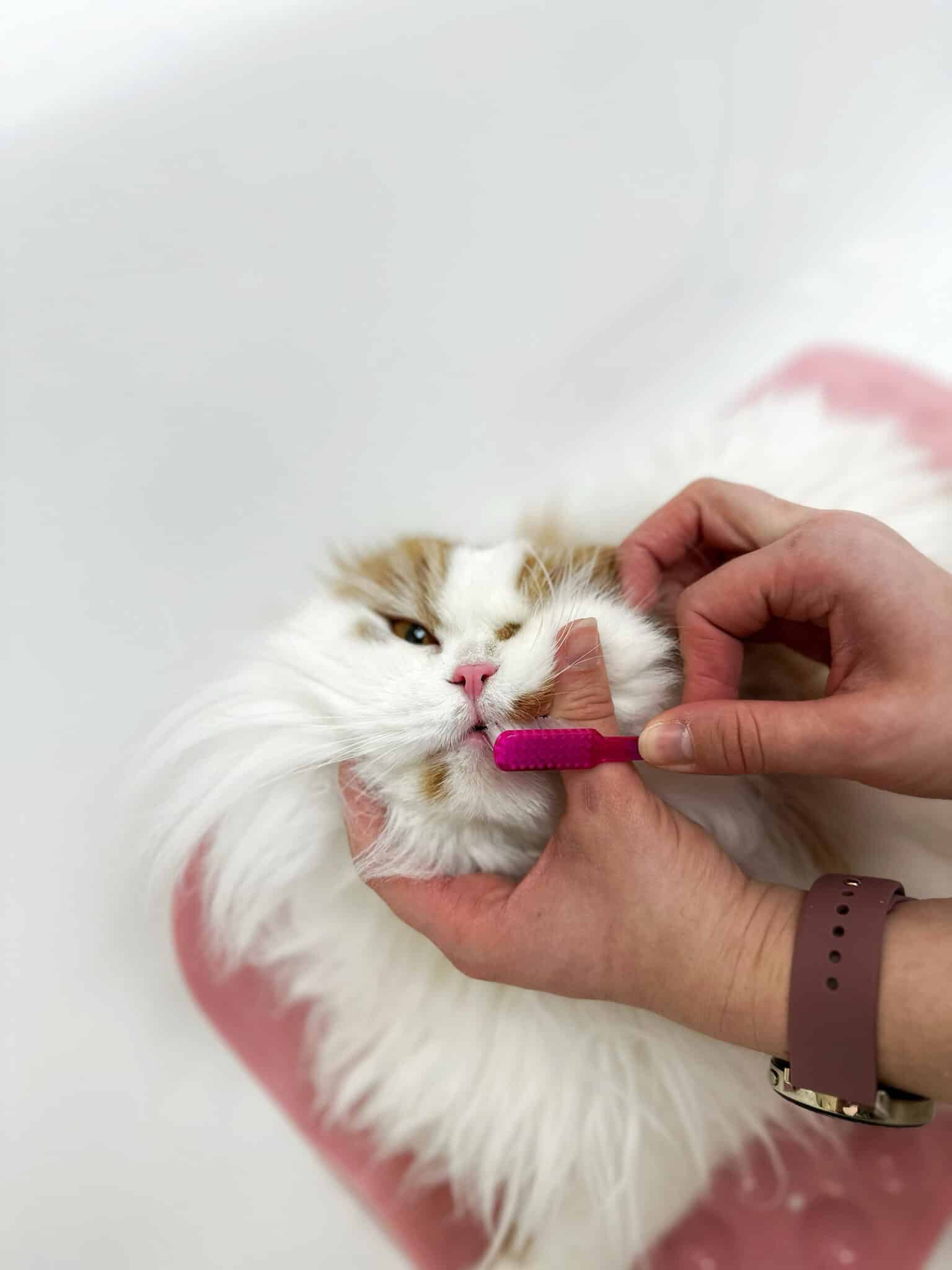
V.O.G DOG SALON employs experienced groomers who have cleaned many teeth of various breeds of dogs and cats. You can be sure that your pet is safe, because we always take care of the health and comfort of the animals entrusted to us.

